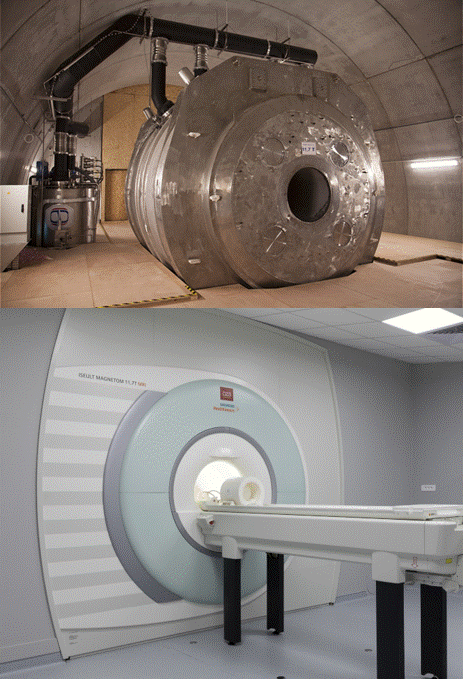AP7-1-INV
Recent Progress of the Iseult 11.7 T Whole Body Magnet
*Pierre Vedrine1
- CEA Paris Saclay1
Understanding the human brain is one of the major scientific challenge of this century. Magnetic resonance imaging (MRI) is one of the most powerful tools for exploring the brain. Increasing sensitivity and spatial, temporal and spectral resolution through higher magnetic fields will help develop new tools in health care to detect and monitor psychiatric and neurodegenerative diseases. It will also contribute to expanding our knowledge in neuroscience by providing information on the structures and functions of the human brain. The Iseult / INUMAC project was initiated in the early 2000s by a Franco-German public-private consortium including the CEA and Siemens Healthineers, as well as the company Guerbet. The overall objective of this project was to study the feasibility of molecular imaging at very high magnetic fields. To this end, a new 11.7 T whole-body MRI magnet reached its nominal field in July 2019 at the CEA Paris-Saclay Neurospin Centre. This magnet, the largest MRI magnet in the world to date, is an actively shielded magnet made from an NbTi superconductor with a homogeneous field level of 11.75 T in a 90 cm warm bore. It operates at a current of 1483 A in a pressurized bath of superfluid LHe at 1.8 K. The stored energy is 338 MJ and the inductance 308 H. The size is about 5 m in diameter and 5 m in length for a total weight of the magnet of 132 tons. In July 2019, the Iseult project magnet was the first MRI magnet with an internal diameter of 90 cm to reach 11.7T: a world record for magnetic energy stored in an MRI magnet. Its spatial homogeneity and temporal stability are already very close to the initial specifications. The insertion of the gradient coil and the integration of the imaging equipment were completed in autumn 2020. The commissioning of the 11.7T MRI continued with the magnet-gradient interaction tests at low magnetic fields (3T, 7T, 10.2T) and then at 11.7T (tests in progress), as well as the start-up of the imaging equipment by Siemens Healthineers (in progress).The first images are expected in the very near future.. Here we will describe the technical challenges and breakthroughs made over the past 15 years to power the Iseult magnet and to produce the first image, including a comparison with existing systems and future projects at higher fields.
